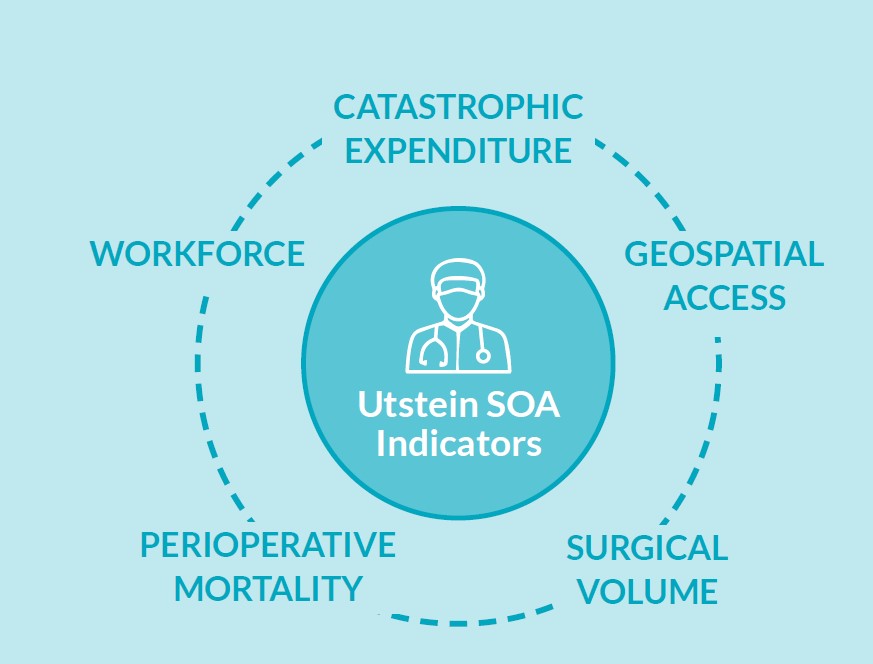Utstein Surgical Indicators
In 2019, in partnership with the Laerdal Foundation, WFSA convened a “Metrics and Reporting Criteria for Surgery, Anaesthesia, & Obstetrics (SOA) Patient Safety” meeting in Utstein Abbey in Norway to undertake the first comprehensive review of the six indicators developed by The Lancet Commission on Global Surgery. The 36 invited global experts refined the existing indicators down to five – surgical volume; geospatial access; workforce; perioperative mortality; and catastrophic expenditure.

In 2021/2022
The consensus reached at the Utstein Conference, which included refined indicators, approaches to data collection and reporting criteria necessary for patient safety, was published in PLoS Medicine.
Following the refinement of the indicators, five multidisciplinary working groups were formed to compile a practical and easy to use ‘How To’ manual for practitioners and policymakers to collect and share global surgical data.
In November 2022, the WFSA convened a second Utstein meeting in Norway to review the data collection manuals with a particular focus on the basic, intermediate, and full data sets and develop data dictionaries for each metric.
Read more about the 2022 meeting
2023 and beyond
Now in the implementation phase, the grant is supporting two pilot projects to use the ‘How To’ manuals and tools to collect data at the hospital level. The pilot project in Ghana, led by co-principal investigators Dr Jade Nunez and Dr Adam Gyedu, is focusing on the following specific aims:
- To assist the Ghana Ministry of Health in gathering five surgical indicators to inform Ghana’s National Surgical, Obstetric and Anaesthesia Plan and to facilitate mechanisms of ongoing routine collection.
- To pilot and validate the methods proposed by the Utstein Perioperative Metrics Project.
The pilot project in South Africa, led by co-principal investigators Dr Bruce Biccard and Dr Hyla Kluyts, is focusing on the following specific aims:
- To demonstrate the feasibility of routine prospective patient-level data collection using the DHIS2 tracker application to describe Perioperative Mortality Rate (POMR) and Surgical Volume at a provincial and national level in South Africa.
- To demonstrate the clinical utility of POMR and Surgical Volume in South African practice when additional data points are added to the basic data points required to define these indicators, e.g., risk adjusted POMR and Surgical Volume disaggregated according to type/severity/urgency of surgery.
Following the completion of the pilots in early 2024, the next steps will be to integrate the indicators and manuals into national and regional data collection processes, and to facilitate and encourage their use at national, regional, and global levels.





